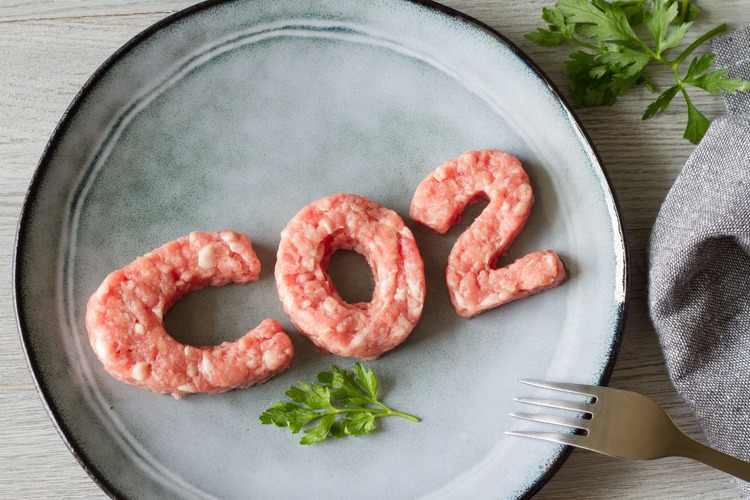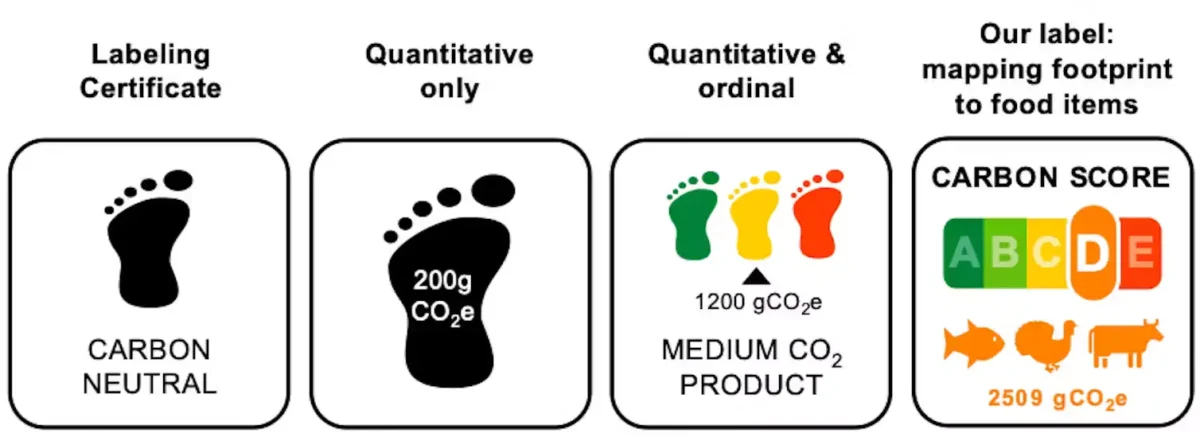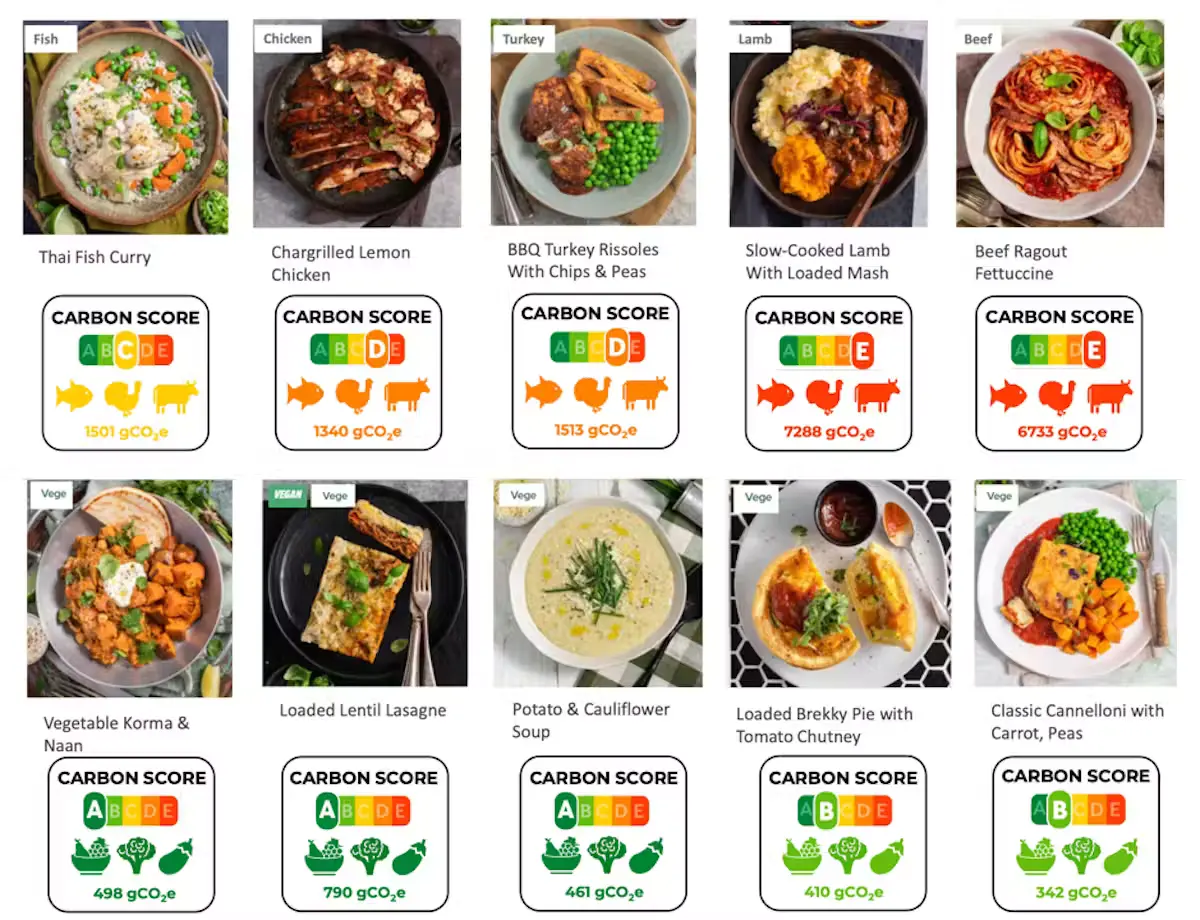
Carbon food labelling may make consumers swap out foodstuffs with high climate footprint for more planet-friendly meals
By
We’re all familiar with the traffic-light system of food labels; red signifying high quantities of a particular substance – like fat, salt and sugar – and green indicating much lower amounts. At a glance, these types of labels allow us to make quick, but informed, choices about what we eat.
However, what remains more difficult to convey in just a snapshot is the environmental impacts of food. For example, producing just one kilogram of beef emits 60kg of greenhouse gases. In comparison, producing the same quantity of peas releases just one kilogram of greenhouse gases.
Such vast differences between two products’ emissions can evade the scope of traditional food labelling that focuses solely on nutritional content.
Enjoying this article? Check out our related reads:
This gap of knowledge has given rise to a new type of labelling known as ‘carbon food labelling’. Typically, such labelling displays a numerical value of greenhouse gas emissions alongside a traffic-light system to denote the environmental impact (green is low, and red is high).
Where is carbon food labelling used?
Already, restaurants are beginning to include carbon food labels on their menus. In one study, as pictured below, these labels took inspiration from the traditional method of carbon labelling (showing the traffic light system and the quantitive amount of CO2 emissions)

JustEat have also begun to roll out carbon food labelling on dishes served by some of its restaurants in Brighton and London, along with restaurants in Bournemouth University’s campus and food outlets at London’s largest exhibition and conference centre, ExCeL.
It’s even possible to see the climate footprint of some of your favourite foods now, using a set of digital scales developed by the Financial Times, using data from Carbon Cloud.
A new approach
Despite the benefits that come with carbon food labelling, a team of researchers from Macquarie University in Australia have found these labels are void of a key piece of information: where carbon emissions actually come from. Including such information helps consumers to better understand the relationship between a particular food source and its environmental impact.
This is important as when a consumer sees high carbon scores and red traffic lights appearing more frequently on meat and other animal products, they begin to make the connection between those products and higher emissions. In turn, this helps to fill a knowledge gap that many consumers have around food-based carbon emissions, and may help them make better-informed decisions.
In particular, adding these details to labels is helpful for pre-prepared and packaged foods (such as soups and ready-to-eat meals) that contain both meat and plant-based foods.
To incorporate such information, researchers recently created a new type of label that clearly displays whether food is sourced mainly from animals or plants, alongside the emissions score and traffic-light coded system as mentioned above.

To test their theory, the team compared their labels with existing carbon labels in a series of experiments with more than 1,800 everyday consumers in Australia, the US and the Netherlands. The results were overwhelmingly positive.

In one experiment involving soup, a group exposed to the new carbon labels learned to associate animal-based soups with higher greenhouse gas emissions more effectively.
In another experiment with Australian consumers – where participants were asked to select five meals from ten options (half of which were animal-based, half plant-based) – the group exposed to new carbon labels chose fewer animal-based options in their weekly meal plan compared to those who saw no labels at all.
A final experiment showed that Dutch university students were more likely to choose a plant-based snack option compared to an animal-based one when viewing the new carbon labels on products.
Changing consumer habits
Ultimately, this new research is promising, showing how simple changes to food labels can create sizeable differences in the products consumers choose to eat.
That may make it easier for people to swap out foodstuffs with significant climate footprint – including frozen prawns, frozen salmon, pork chops and chicken breast, as well as dairy products like cheddar and mozzarella – for more planet-friendly alternatives.
While traditional examples of carbon food labelling may be a good start, though, researchers who developed these new labels continue to advocate for more detailed labels, like the ones they have developed. In doing so, they argue, consumers can see a much clearer picture of food’s environmental impact.




